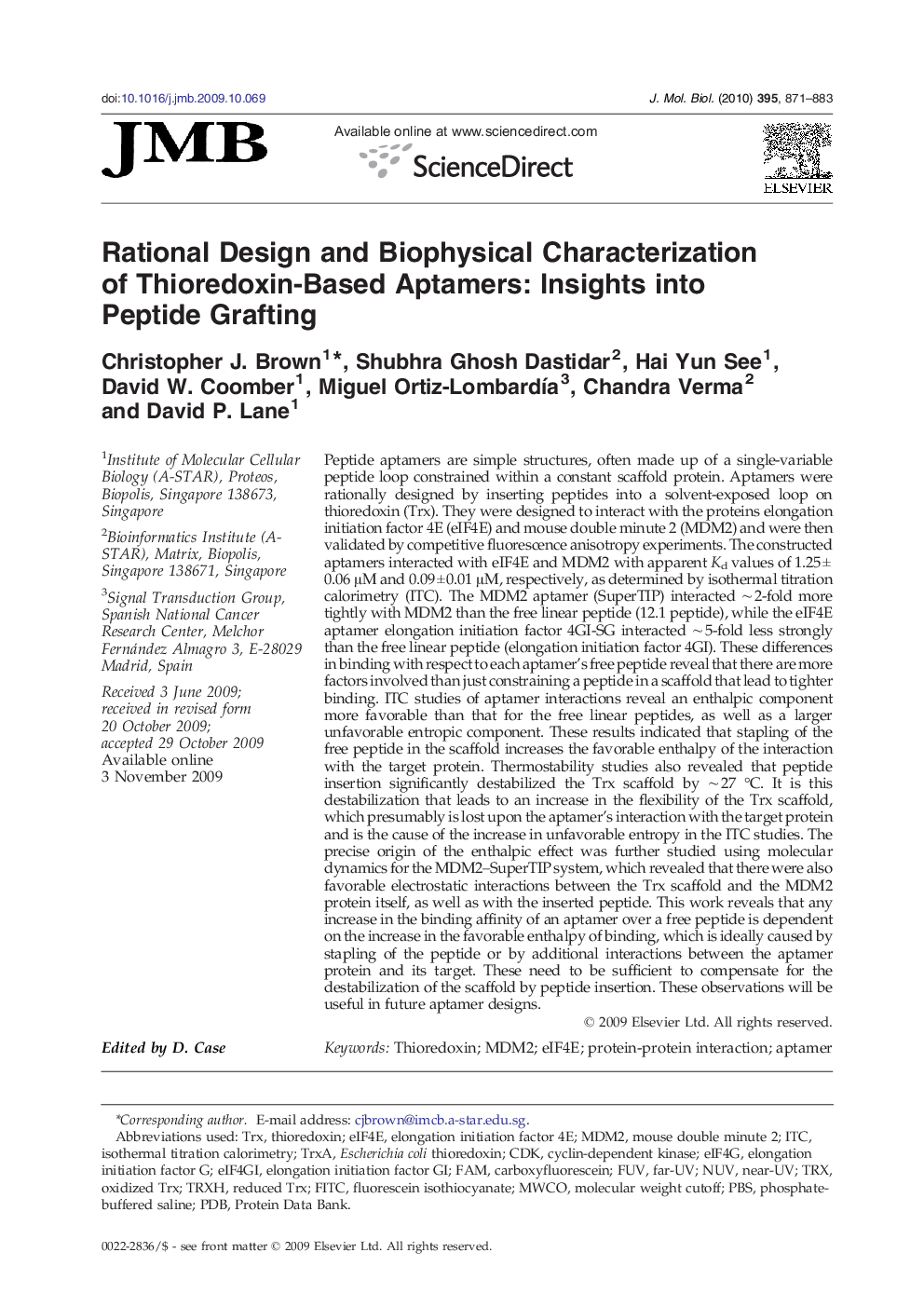| کد مقاله | کد نشریه | سال انتشار | مقاله انگلیسی | نسخه تمام متن |
|---|---|---|---|---|
| 2186085 | 1096032 | 2010 | 13 صفحه PDF | دانلود رایگان |

Peptide aptamers are simple structures, often made up of a single-variable peptide loop constrained within a constant scaffold protein. Aptamers were rationally designed by inserting peptides into a solvent-exposed loop on thioredoxin (Trx). They were designed to interact with the proteins elongation initiation factor 4E (eIF4E) and mouse double minute 2 (MDM2) and were then validated by competitive fluorescence anisotropy experiments. The constructed aptamers interacted with eIF4E and MDM2 with apparent Kd values of 1.25 ± 0.06 μM and 0.09 ± 0.01 μM, respectively, as determined by isothermal titration calorimetry (ITC). The MDM2 aptamer (SuperTIP) interacted ∼ 2-fold more tightly with MDM2 than the free linear peptide (12.1 peptide), while the eIF4E aptamer elongation initiation factor 4GI-SG interacted ∼ 5-fold less strongly than the free linear peptide (elongation initiation factor 4GI). These differences in binding with respect to each aptamer's free peptide reveal that there are more factors involved than just constraining a peptide in a scaffold that lead to tighter binding. ITC studies of aptamer interactions reveal an enthalpic component more favorable than that for the free linear peptides, as well as a larger unfavorable entropic component. These results indicated that stapling of the free peptide in the scaffold increases the favorable enthalpy of the interaction with the target protein. Thermostability studies also revealed that peptide insertion significantly destabilized the Trx scaffold by ∼ 27 °C. It is this destabilization that leads to an increase in the flexibility of the Trx scaffold, which presumably is lost upon the aptamer's interaction with the target protein and is the cause of the increase in unfavorable entropy in the ITC studies. The precise origin of the enthalpic effect was further studied using molecular dynamics for the MDM2–SuperTIP system, which revealed that there were also favorable electrostatic interactions between the Trx scaffold and the MDM2 protein itself, as well as with the inserted peptide. This work reveals that any increase in the binding affinity of an aptamer over a free peptide is dependent on the increase in the favorable enthalpy of binding, which is ideally caused by stapling of the peptide or by additional interactions between the aptamer protein and its target. These need to be sufficient to compensate for the destabilization of the scaffold by peptide insertion. These observations will be useful in future aptamer designs.
Journal: Journal of Molecular Biology - Volume 395, Issue 4, 29 January 2010, Pages 871–883